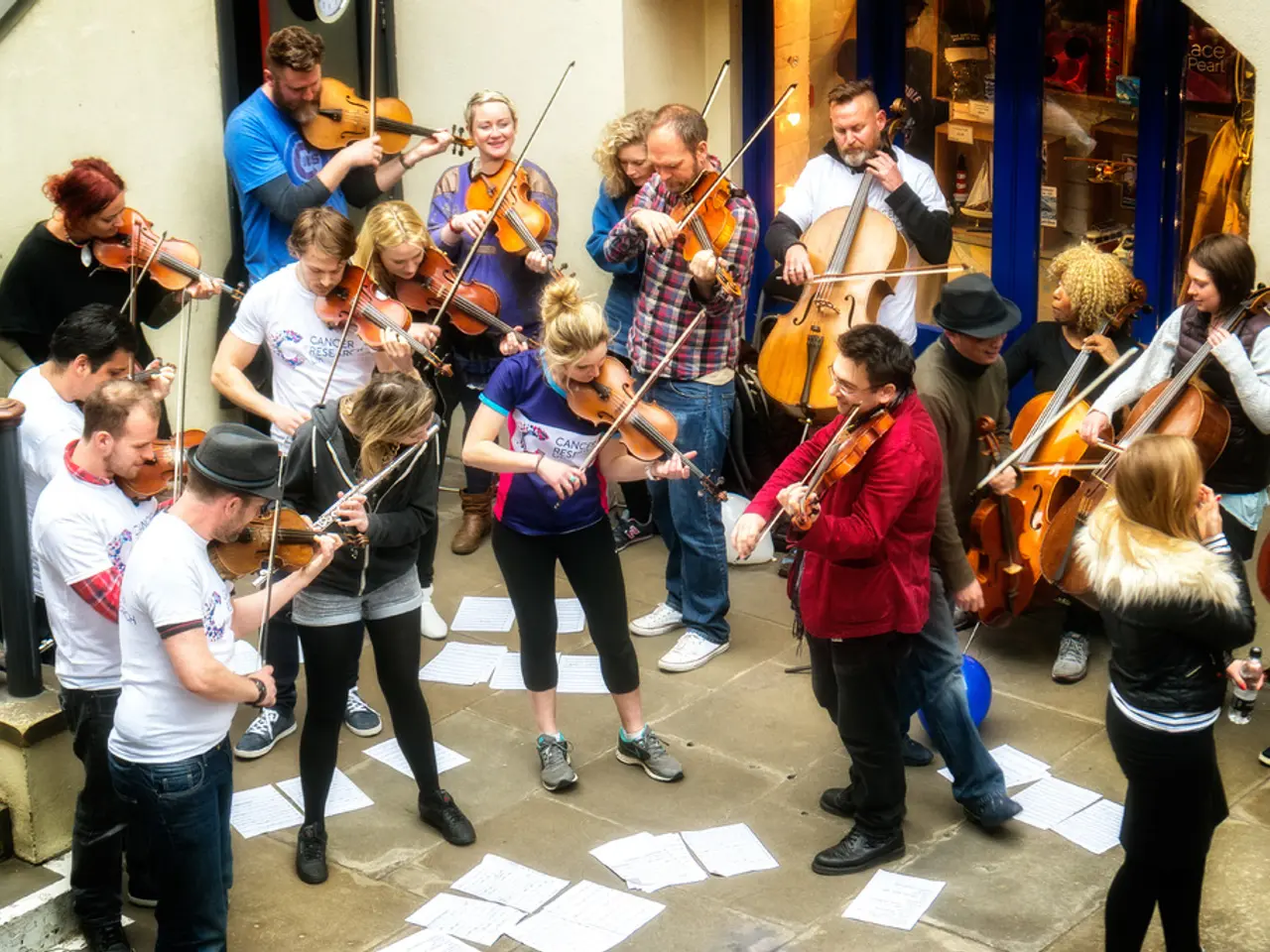The path musicians take to secure a position in an orchestra.
In the world of classical music, the quest for a coveted position in an orchestra is a challenging and rigorous process. Orchestral auditions, designed to assess a candidate's technical prowess, musical sensitivity, and suitability for specific roles, are meticulously crafted to ensure a fair and comprehensive evaluation.
Typically, auditions take place in the concert hall where the orchestra rehearses, transforming the stage into a platform for aspiring musicians. The audition process requires candidates to prepare specific technical exercises, solo pieces, and orchestral excerpts tailored to their instrument.
For strings, scales with slurs, contrasting solo pieces, and orchestral excerpts such as standard symphony passages are common requirements. Woodwind players, on the other hand, may be asked to perform scales including chromatic, a short solo piece or two contrasting pieces, and occasionally jazz standards in a jazz context. Brass players typically prepare major/minor and chromatic scales, solo pieces, orchestral excerpts, and sometimes jazz pieces if relevant.
Percussionists are expected to prepare two contrasting pieces on different instruments, with no accompaniment usually required. Jazz instruments, such as saxophone, trumpet, and trombone, may require standards with head, solos, comping, plus sight-reading big band charts.
In addition to these requirements, most auditions include a sight-reading component to test the player’s ability to perform unfamiliar music accurately and musically at first glance. Accompaniment is not always required, and recorded accompaniments are generally not allowed.
'Blind auditions' have become the norm, with adjudication panels sealed off behind a screen to eliminate unconscious bias. In the UK, several musicians might be invited for a 'trial' with an orchestra for several projects. Orchestras may invite only a fraction of the applicants for in-person auditions, often favouring those with previous professional experience.
The competition is fierce due to the large number of highly skilled musicians compared to the limited number of available jobs. For instance, a typical violin job advertisement by a British orchestra may have over 200 applicants, most of whom are trained at top music colleges.
First-round auditions are often conducted as video auditions to reduce the number of competitors. In Germany and the United States, the winner of an audition is usually announced on the day and given a probationary period with the orchestra.
Some standard requirements for specific instruments include Haydn's Trumpet Concerto for a trumpet audition, the opening of the Haydn Concerto in C Major for a cello audition, and the opening of Mozart's Horn Concerto No.4 for a horn audition. For strings, the opening of Richard Strauss' Don Juan and an extract from a Tchaikovsky or Brahms symphony are common orchestral excerpts for string positions.
Playing to an empty space and a screen during an in-person audition can feel unusual for musicians who are used to performing for an audience. However, the dedication, skill, and ability to perform under pressure required to succeed in an orchestra audition are remarkable.
Auditions for orchestra jobs are a common and challenging process for musicians, offering a unique opportunity to showcase their talents and secure a place in the symphony of music.
In the realm of music, the pursuit of a career in the orchestra intersects with finance, as a successful audition can lead to a long-term position, providing a steady income for the musician.
Moreover, in the realm of business, the audition process can be likened to interviews for careers, as both require candidates to showcase their skills, adaptability, and suitability for the role. This similarity is further emphasized by the rigorous competition among a large number of highly skilled contenders, mirroring the quest for a coveted position in various corporate environments.




